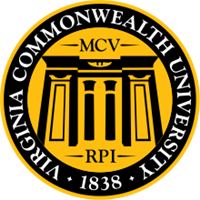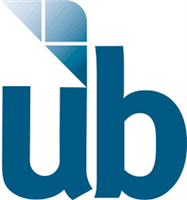What do they do?
Assist scientists or related professionals in building, maintaining, modifying, or using geographic information systems (GIS) databases. May also perform some custom application development or provide user support.
Also known as:
Geographic Information System Analyst (GIS Analyst), Geographic Information Systems Administrator (GIS Administrator), Geographic Information Systems Analyst (GIS Analyst), Geographic Information Systems Coordinator (GIS Coordinator), GIS Specialist (Geographic Information Systems Specialist), GIS Technician (Geographic Information Systems Technician), Resource Analyst
-
6.1%
Change
Ranks #44 in job growth rate1,000Job Openings
Ranks #15 in net job growth
Colleges with the most graduates that become Geographic Information Systems Technologists and Technicians
-
Virginia Commonwealth University
Richmond, VA
-
University of Maryland Global Campus
Adelphi, MD
-
University of Baltimore
Baltimore, MD
-
Columbus Technical College
Columbus, GA
-
Southern Regional Technical College
Thomasville, GA
Looking for colleges that offer a specific major? Use the College Match Tool to find your best-matched schools and discover your estimated Net Price!
- Doctorate or Professional Degree (1%)
- Master's degree (14%)
- Bachelor's degree (39%)
- Associate's degree (14%)
- Some college, no degree (21%)
- High school diploma equivalent (10%)
- Less than high school diploma (1%)
Most Popular Majors that prepare Geographic Information Systems Technologists and Technicians
-
#1
-
Degrees Granted
110
-
Female Students
29
-
Male Students
81
-
Median Starting Salary
$53,350
-
-
#2
-
Degrees Granted
75
-
Female Students
25
-
Male Students
50
-
Median Starting Salary
$53,350
-
-
#3
-
Degrees Granted
44
-
Female Students
14
-
Male Students
30
-
Median Starting Salary
$53,000
-
-
#4
-
Degrees Granted
15
-
Female Students
7
-
Male Students
8
-
Median Starting Salary
$46,300
-
People in this career often have these skills:
- Reading Comprehension - Understanding written sentences and paragraphs in work-related documents.
- Critical Thinking - Using logic and reasoning to identify the strengths and weaknesses of alternative solutions, conclusions, or approaches to problems.
- Speaking - Talking to others to convey information effectively.
- Complex Problem Solving - Identifying complex problems and reviewing related information to develop and evaluate options and implement solutions.
- Active Listening - Giving full attention to what other people are saying, taking time to understand the points being made, asking questions as appropriate, and not interrupting at inappropriate times.
- Writing - Communicating effectively in writing as appropriate for the needs of the audience.
- Active Learning - Understanding the implications of new information for both current and future problem-solving and decision-making.
- Judgment and Decision Making - Considering the relative costs and benefits of potential actions to choose the most appropriate one.
People in this career often know a lot about:
- Geography - Knowledge of principles and methods for describing the features of land, sea, and air masses, including their physical characteristics, locations, interrelationships, and distribution of plant, animal, and human life.
- Computers and Electronics - Knowledge of circuit boards, processors, chips, electronic equipment, and computer hardware and software, including applications and programming.
- English Language - Knowledge of the structure and content of the English language including the meaning and spelling of words, rules of composition, and grammar.
- Mathematics - Knowledge of arithmetic, algebra, geometry, calculus, statistics, and their applications.
- Design - Knowledge of design techniques, tools, and principles involved in production of precision technical plans, blueprints, drawings, and models.
People in this career often have talent in:
- Inductive Reasoning - The ability to combine pieces of information to form general rules or conclusions (includes finding a relationship among seemingly unrelated events).
- Written Comprehension - The ability to read and understand information and ideas presented in writing.
- Near Vision - The ability to see details at close range (within a few feet of the observer).
- Oral Expression - The ability to communicate information and ideas in speaking so others will understand.
- Deductive Reasoning - The ability to apply general rules to specific problems to produce answers that make sense.
- Oral Comprehension - The ability to listen to and understand information and ideas presented through spoken words and sentences.
- Problem Sensitivity - The ability to tell when something is wrong or is likely to go wrong. It does not involve solving the problem, only recognizing that there is a problem.
- Information Ordering - The ability to arrange things or actions in a certain order or pattern according to a specific rule or set of rules (e.g., patterns of numbers, letters, words, pictures, mathematical operations).
- Written Expression - The ability to communicate information and ideas in writing so others will understand.
- Category Flexibility - The ability to generate or use different sets of rules for combining or grouping things in different ways.
- Speech Clarity - The ability to speak clearly so others can understand you.
- Speech Recognition - The ability to identify and understand the speech of another person.
- Flexibility of Closure - The ability to identify or detect a known pattern (a figure, object, word, or sound) that is hidden in other distracting material.
- Mathematical Reasoning - The ability to choose the right mathematical methods or formulas to solve a problem.
People in this career often do these activities:
- Prepare graphics or other visual representations of information.
- Prepare analytical reports.
- Create databases to store electronic data.
- Update computer database information.
- Provide technical support for software maintenance or use.
- Design software applications.
- Write computer programming code.
- Evaluate data quality.
- Develop scientific or mathematical models.
- Analyze data to identify trends or relationships among variables.
- Prepare data for analysis.
- Coordinate project activities with other personnel or departments.
- Test software performance.
- Design computer modeling or simulation programs.
- Document technical specifications or requirements.
- Troubleshoot issues with computer applications or systems.
- Collaborate with others to resolve information technology issues.
- Develop models of information or communications systems.
- Recommend changes to improve computer or information systems.
- Collaborate with others to determine design specifications or details.
- Train others in computer interface or software use.
- Analyze Geographic Information Systems (GIS) data for use in green applications.
This page includes data from:

 Occupation statistics: USDOL U.S. Bureau of Labor Statistics Occupational Employment Statistics
Occupation statistics: USDOL U.S. Bureau of Labor Statistics Occupational Employment Statistics








